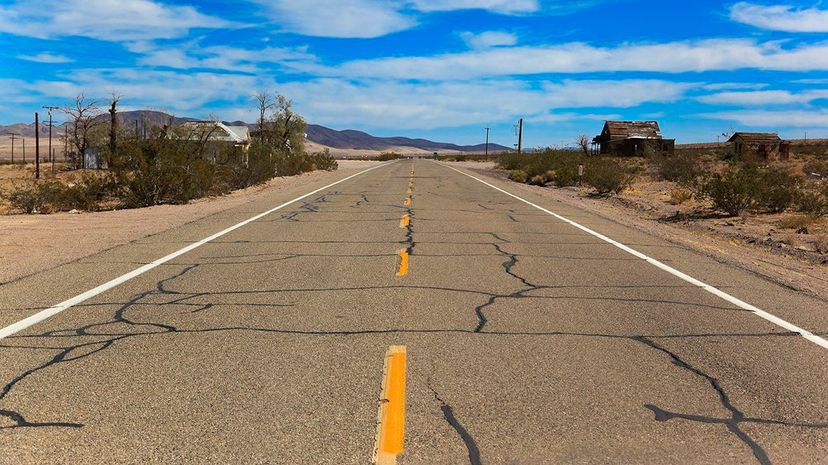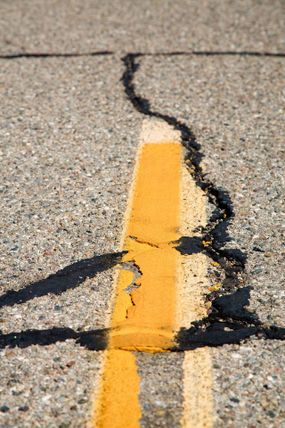
Spend a good amount of time driving, especially in rural areas, and you've probably noticed those messy-looking black squiggles that cut across asphalt road surfaces in what seems like haphazard fashion. But rest assured that they're not simply the result of some sloppy tar work by a road crew that decided to have a few beers before the end of the shift.
Instead, what you're noticing is crack sealing. It's a time-honored technique for remedying the damaged road surfaces, without inflicting even more pain upon taxpayers by tearing up and repaving the entire road.
Advertisement

As a California Department of Transportation advisory guide explains, pavement develops cracks when stress — from the pounding of heavy traffic, for example, or expansion and contraction due to seasonal changes in temperature — builds up in the surface layer that exceeds the tensile strength of the asphalt. Design and construction flaws, such as inadequate drainage for rainfall, or a weak base underneath the road, can also cause the surface to fail.
In the arcane, highly technical world of road maintenance, there seem to be as many different types of cracks as there are types of snow in Finland. One of the most unsightly is fatigue cracking, which turns the highway into something resembling an alligator's hide, and which usually requires an extensive repair job. Another type of damage, reflection cracking, results from movement between the road's asphalt and concrete layers, and looks more like a jagged gash. There's also edge cracking, in which rows of wavy, curved cracks parallel the road shoulder.
If you tried to build a nice new road every time that stuff happened, it would be prohibitively expensive.
"Introduction to Crack Sealing," a 2008 treatise on the subject from the Texas Engineering Extension Service at Texas A&M University, notes that simply sealing cracks is way cheaper — about $2,500 per mile (1.6 kilometers) of road, compared to $60,000 for putting down an overlay surface. In 2016, the City of Littleton, Colorado, estimated that crack sealing cost about $5,500 per lane mile, while overlaying costed approximately $320,000 per lane mile.
While the black stuff that you see on the roads looks like tar, these days it's more likely to be some sort of high-performance polymer-asphalt mix, designed to form a bond that's flexible enough to keep the road from cracking even more. Crews apply it to the fissures with a device that looks vaguely like a vacuum sweeper hose.
Advertisement
